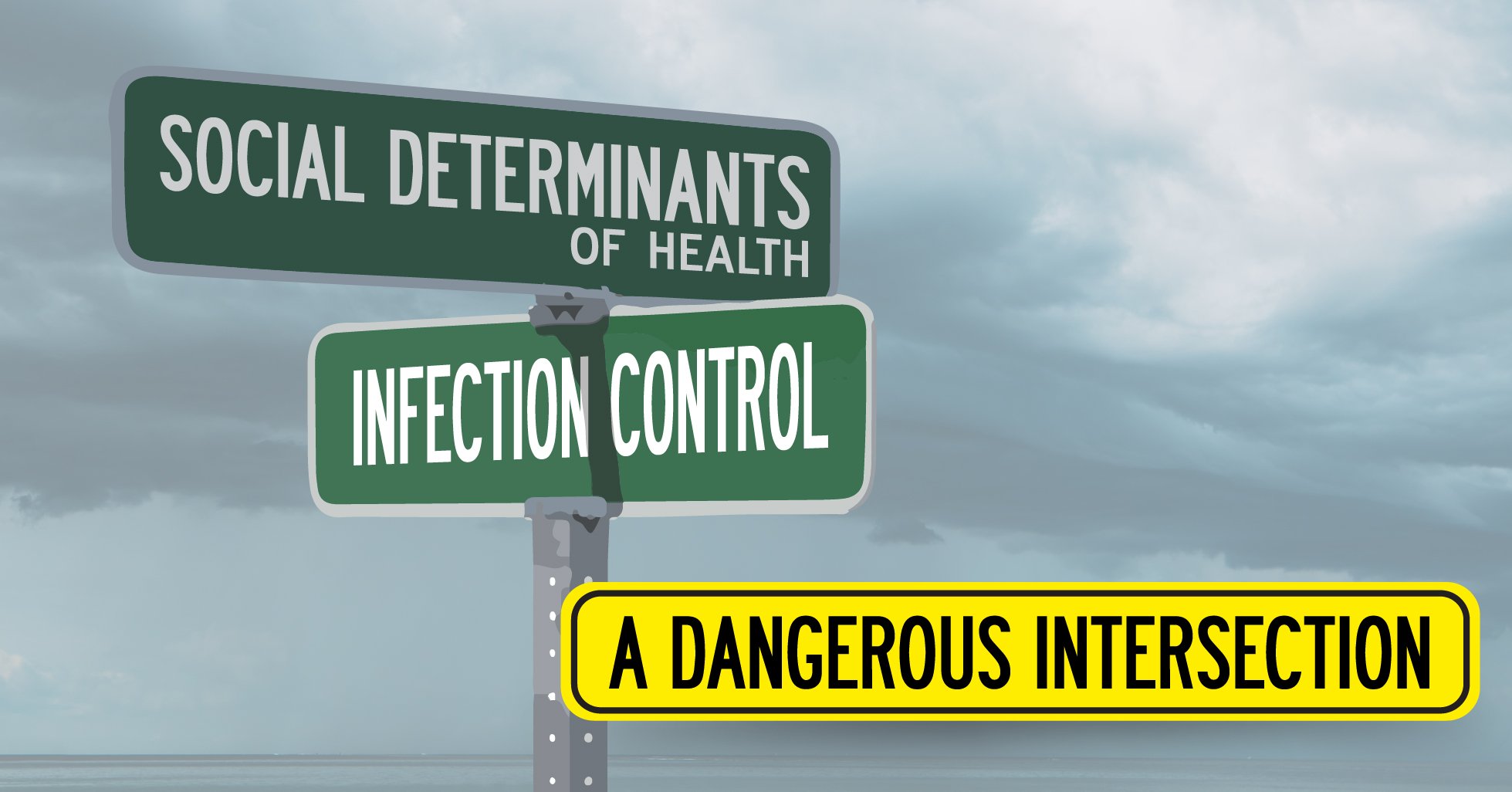Social Determinants of Health and Infection Control

 Medical researchers have recently placed more emphasis on the non-medical conditions that impact patient health and outcomes. Collectively known as social determinants of health (SDOH), these are the conditions surrounding birth, growth, living, working, and aging. The distribution of money, power, and resources play heavily into the formula: Those lacking stable access to any (or all) of these factors see impacts on health, including exposure to and infection by disease-causing pathogens. In today's post, we'll explore the intersection of SDOH and infection control and prevention, and describe some of the ways today's health system is trying to address this issue.
Medical researchers have recently placed more emphasis on the non-medical conditions that impact patient health and outcomes. Collectively known as social determinants of health (SDOH), these are the conditions surrounding birth, growth, living, working, and aging. The distribution of money, power, and resources play heavily into the formula: Those lacking stable access to any (or all) of these factors see impacts on health, including exposure to and infection by disease-causing pathogens. In today's post, we'll explore the intersection of SDOH and infection control and prevention, and describe some of the ways today's health system is trying to address this issue.
Let's begin with an overview of these non-medical social determinants of health that impact health outcomes. Structural determinants involve the physical environment and include housing, transportation, greenspace, pedestrian areas, and access to healthy food (which includes a standard grocery store with a produce section). Social determinants include support systems, community engagement, discrimination, and social integration. Education also plays a role, including literacy, vocational training, English-language learning, and access to higher education opportunities. Overall economic stability has a huge impact, including employment opportunities, income scales, cost of living, debt management, and support agencies. Finally, access to health care can be considered a social determinant as well, including provider availability, provider cultural competency, quality of care, and health coverage.
Anyone can take a moment to consider these determinants and think of many ways they can impact health - but how do they impact infection control and prevention?
When SDOH are improved, infection rates go down. A good case study comes from history: Tuberculosis rates in Europe and North America were starting to go down even before the introduction of antibiotics, simply because living conditions of the very poor were improving thanks to better housing and nutrition. And yet, tuberculosis has not been eliminated even though treatments are now available - again, because of SDOH. Countries with poor nutrition and inadequate housing continue to see endemic tuberculosis.
How about hospital-associated infections?
Current research confirms that SDOH impact HAI risk in patients. Hospitals with the highest HAI rates serve the patients most impacted by challenging SDOH such as poverty, nutrition, and access to regular medical care. Language barriers affect patients' and caregivers' ability to understand pre- and post-operative care, as well as their ability to understand what early symptoms of infection to report; cultural barriers may exist that make even talking to a healthcare provider challenging. A patient with poor nutrition has a weaker immune system, making him/her more vulnerable to an infection.
Studies show that interpersonal determinants, such as unconscious bias, impact infection rates due to inequalities such as less attention from nurses, running fewer tests for complaints, lack of education in identifying signs of infection in non-white patients, and inadequate pain control. Patients from high-poverty communities also have higher incidences of hospital-onset MRSA, due in part to higher rates of community-acquired MRSA. Finally, quality infection control and prevention programs require sufficient staffing and funding, things for which hospitals located in high-poverty urban and rural regions often lack the funding.
What is being done to address SDOH?
A major step towards lessening impact of SDOH is including health in non-health sectors. As policy-makers, city planners, and philanthropists take steps towards solving the many issues facing at-risk populations, health should always be considered, even if the focus is seemingly unrelated. Targeted efforts, however, are also essential, including funding health facilities in high-poverty areas. The Affordable Care Act of 2016 included the creation of "Accountable Health Communities" funding (and testing) initiatives to help identify and address social needs which impact health, alongside other pilot programs.
These efforts remain broad, with HAI reduction steps still remaining mostly in hospitals themselves. Infection preventionists must work with those outside the hospital to help address SDOH that impact infection risk, but those IPs in the most affected hospitals are already overworked and understaffed. While society works on health equality and SDOH, the built environment can provide an immediate impact on HAIs. Simply by investing in biocidal materials, even the most challenging hospital can reduce HAIs. Copper-infused EOScu, currently the only affordable biocidal material, reduces the pathogens surrounding the patient (the bioburden), without requiring more work by nurses, IPs, or environmental services. This practical one-time investment can serve as a bridge to a day when SDOH no longer have such a huge impact on patient outcomes.
![EOScu Logo - Dark - Outlined [07182023]-01](https://blog.eoscu.com/hubfs/Eoscu_June2024/Images/EOScu%20Logo%20-%20Dark%20-%20Outlined%20%5B07182023%5D-01.svg)




